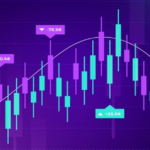In the expansive world of financial markets, currency trading, or forex trading, stands as one of the most popular and accessible forms. Whether you’re a seasoned investor or a novice looking to diversify your portfolio, understanding how to trade currency is crucial. This guide will walk you through the basics of forex trading and how to get started, emphasizing the importance of doing your due diligence, such as checking broker reviews at Broker ReviewFX.
Understanding Forex Trading
Forex trading involves the simultaneous buying of one currency while selling another, primarily with the aim of speculation. Currency values fluctuate due to various economic factors, including interest rates, inflation, and political stability. Unlike other financial markets, forex operates 24 hours a day, providing ample opportunity for traders to engage in the market.
Step 1: Learn the Basics
Before diving into currency trading, familiarize yourself with basic forex terminology and concepts:
Currency Pair: It consists of the base currency and the quote currency (e.g., USD/EUR). The value indicates how much of the quote currency is needed to purchase one unit of the base currency.
Pip: The smallest price move that a given exchange rate can make based on market convention.
Leverage: Allows you to control a large position with a relatively small amount of capital, amplifying both gains and losses.
Step 2: Choose the Right Broker
Selecting a reliable forex broker is pivotal. Ensure they’re regulated by a reputable authority and offer a platform that suits your trading style. It’s crucial to check broker reviews at Broker ReviewFX or similar platforms to gauge their credibility, customer service, and user experiences.
Step 3: Analyze the Market
There are two main approaches to market analysis in forex:
Fundamental Analysis: Examines economic indicators, news, and financial data to predict currency movements.
Technical Analysis: Studies past market data, primarily price and volume, to forecast future price movements.
Combine both methods for a more comprehensive market insight.
Step 4: Develop a Trading Strategy
Your trading strategy should align with your financial goals, risk tolerance, and trading style. Common strategies include day trading, swing trading, and positional trading. Consistency and discipline are key, as is an understanding of when to exit trades, both in profit and loss scenarios.
Step 5: Practice with a Demo Account
Most brokers offer demo accounts where you can practice trading without risking real money. Thus, use this to familiarize yourself with market conditions, your trading platform, and your strategy’s effectiveness.
Step 6: Start Trading
Begin with small investments and gradually increase your exposure as you gain more experience. Continuously analyze the market, adjust your strategy as necessary, and always stay informed about global economic events.
Conclusion
Currency trading offers exciting opportunities but also comes with considerable risk. Education, a well-thought-out strategy, and a disciplined approach are crucial. Always start by learning the basics, choose a reputable broker by checking resources like Broker ReviewFX, and never stop learning. As with any investment, there’s no guaranteed profit, but with the right approach, forex trading can be a valuable part of your investment strategy. Happy trading!












0 Comments